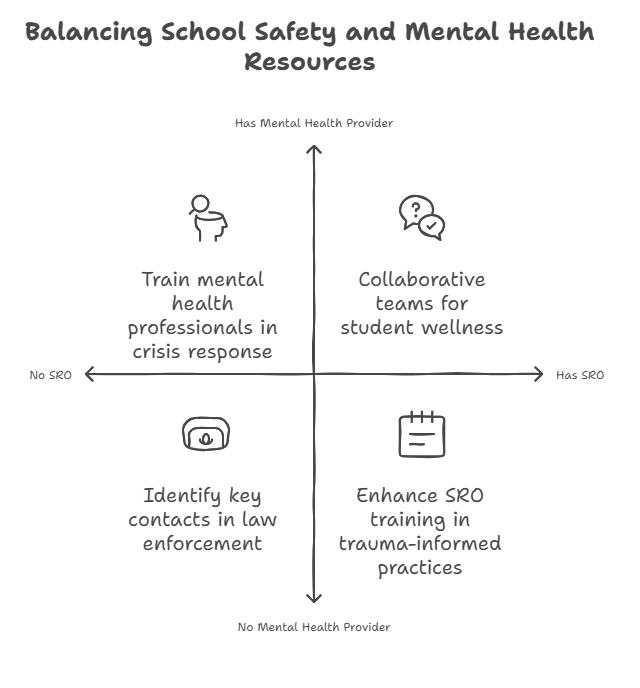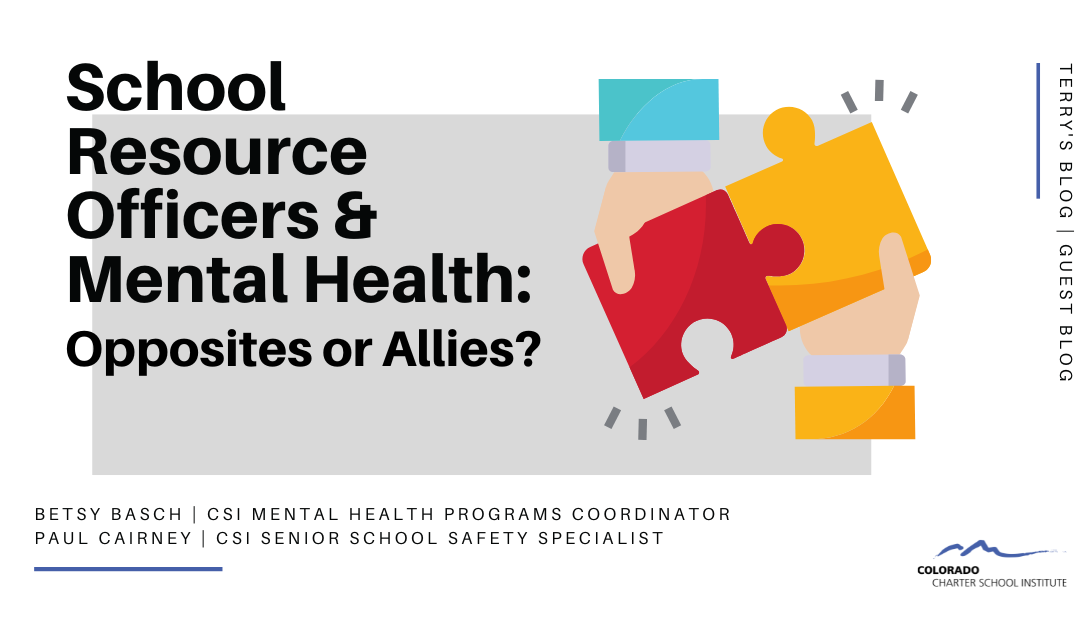School safety has become an increasingly pressing concern, sparking heated debates over the role of School Resource Officers (SROs). Some research highlights negative impacts, while other reports emphasize the growing demand for SROs. With conflicting reports and differing state policies, many school leaders find themselves asking:
- Are SROs helpful or harmful?
- Are they essential or expendable?
- Should schools invest in SROs over mental health resources?
The answer isn’t black and white. Instead of framing school security and mental health as opposing forces, we should focus on how they can work together to create a safer, more supportive learning environment.

Building a Balanced Approach
If Your School Has an SRO but No Mental Health Provider
Enhance SRO training in areas such as trauma-informed practices, restorative justice, and crisis intervention. Ensure they’re integrated into student support structures like Multi-Tiered Systems of Support (MTSS) and Positive Behavioral Interventions and Supports (PBIS). Schools should also monitor discipline and arrest data to identify disparities and take corrective action if needed.
If Your School Has a Mental Health Provider but No SRO
Mental health professionals should be trained in trauma-informed discipline, restorative practices, and crisis response. They can also serve as key advisors in school discipline decisions. If an SRO is eventually hired, the school should clarify their role as either a peace officer or a law enforcement presence.
If Your School Has Both an SRO and a Mental Health Provider
Create collaborative teams focused on student wellness and crisis response. Joint training sessions, shared data, and unified messaging can reinforce a school-wide commitment to both safety and mental well-being. Schools should also assess how SROs impact discipline, attendance, and student behavior.
If Your School Has Neither an SRO Nor a Mental Health Provider
In this case, schools must take proactive steps to build capacity in trauma-informed practices and crisis response. Identifying key contacts in both law enforcement and mental health services can help bridge gaps in resources.

Moving Forward
Having an SRO doesn’t mean a school’s culture will suffer—if collaboration and accountability are in place. Schools that balance law enforcement presence with mental health support create a stronger, more resilient environment for students. Instead of seeing these roles as conflicting, it’s time to embrace their potential for partnership.
For additional guidance, reach out to our Mental Health Coordinator, Betsy Basch, or our Senior Security Specialist, Paul Cairney.
Source Materials:
- Engle, K. R., & Panahon, C. J. (2024). “The Effects of School Resource Officers on School Climate.” Communique, National Association of School Psychologists, Vol 53, Iss 1, pp. 19-21.
- Modan, N. (2024). “National Center of Education Statistics Data Sheds Light on Post-Pandemic Shifts for SROs, Mental Health Resources.” K-12 Dive.
- NASRO (2012). To Protect and Educate: The School Resource Officer and Prevention of Violence in Schools. Retrieved January 8, 2025, from NASRO.

